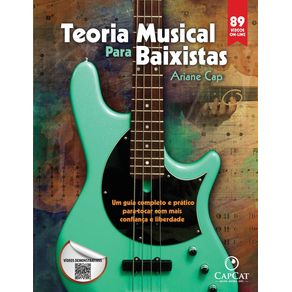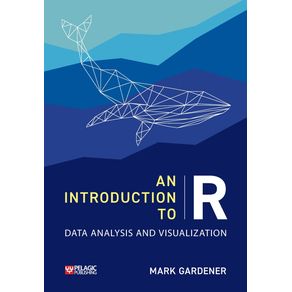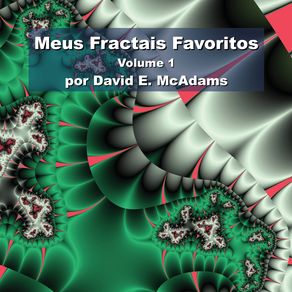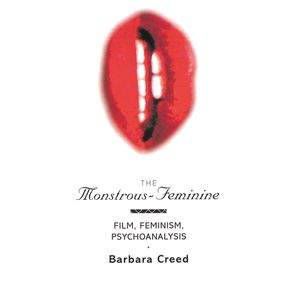| Selo | Outskirts Press |
|---|---|
| Edição | 0 |
| Idioma | Inglês |
| Autores | John Bollenbacher |
| Acabamento | Capa Dura |
| Quantidade de Páginas | 278 |
| Origem | Literatura Estrangeira |
 Cavaleiros do Zodíaco - Saint Seiya Kanzenban - Vol. 12
Cavaleiros do Zodíaco - Saint Seiya Kanzenban - Vol. 12
Editora JBC
R$ 64,90 R$ 51,92 à vista Throb - Duologia Life On Stage - Livro 1
Throb - Duologia Life On Stage - Livro 1
EDITORA CHARME
R$ 69,90 à vista Escocês Arrogante
Escocês Arrogante
CHARME
R$ 67,90 à vista Beat - Duologia Life On Stage - Livro 2
Beat - Duologia Life On Stage - Livro 2
EDITORA CHARME
R$ 69,90 à vista A Revolta Das Elites E A Trai‹o Da Democracia
A Revolta Das Elites E A Trai‹o Da Democracia
Edi�›es 70
R$ 119,00 ou até 2x sem juros A falência do narrador ou quem está narrando a história?
A falência do narrador ou quem está narrando a história?
Editora Viseu
R$ 43,90 à vista Teoria Musical para Baixistas
Teoria Musical para Baixistas
CapCat Music Publishing
R$ 188,53 ou até 3x sem juros Los Ramones
Los Ramones
Draft2Digital
R$ 193,18 ou até 3x sem juros An Introduction to R
An Introduction to R
Pelagic Publishing Ltd
R$ 411,27 ou até 3x sem juros The AI-Powered Product Manager
The AI-Powered Product Manager
Draft2Digital
R$ 162,98 ou até 3x sem juros Understanding Crypto Fundamentals
Understanding Crypto Fundamentals
Springer Nature B.V.
R$ 209,97 ou até 3x sem juros Christian Petzold
Christian Petzold
University Press of Mississippi
R$ 167,98 ou até 3x sem juros An Enchanting World
An Enchanting World
Julia Spiri
R$ 81,33 à vista Raymond Chandlers Marlowe
Raymond Chandlers Marlowe
J.T. Colby & Company, Inc.
R$ 133,32 ou até 2x sem juros React Key Concepts
React Key Concepts
Packt Publishing
R$ 390,00 ou até 3x sem juros A falência do narrador ou quem está narrando a história?
A falência do narrador ou quem está narrando a história?
Editora Viseu
R$ 43,90 à vista Angular Design Patterns and Best Practices
Angular Design Patterns and Best Practices
Packt Publishing
R$ 323,97 ou até 3x sem juros Teoria Musical para Baixistas
Teoria Musical para Baixistas
CapCat Music Publishing
R$ 188,53 ou até 3x sem juros Where Wolf
Where Wolf
Encyclopocalypse Publications
R$ 182,58 ou até 3x sem juros Meus Fractais Favoritos
Meus Fractais Favoritos
Life is a Story Problem LLC
R$ 167,50 ou até 3x sem juros The Confident Stylist
The Confident Stylist
Echo Books
R$ 168,01 ou até 3x sem juros Smart Until Its Dumb
Smart Until Its Dumb
Applied Maths Ltd
R$ 117,01 ou até 2x sem juros Trashman Begins
Trashman Begins
Lulu Press
R$ 65,51 à vista An Enchanting World
An Enchanting World
Julia Spiri
R$ 81,33 à vista Raymond Chandlers Marlowe
Raymond Chandlers Marlowe
J.T. Colby & Company, Inc.
R$ 133,32 ou até 2x sem juros Raymond Chandlers Philip Marlowe, The Little Sister
Raymond Chandlers Philip Marlowe, The Little Sister
J.T. Colby & Company, Inc.
R$ 129,48 ou até 2x sem juros Intelligent Automation with IBM Cloud Pak for Business Automation
Intelligent Automation with IBM Cloud Pak for Business Automation
Packt Publishing
R$ 341,88 ou até 3x sem juros Salad Days#1
Salad Days#1
Via Lactea Ltd.
R$ 202,68 ou até 3x sem juros Practical R 4
Practical R 4
Springer Nature B.V.
R$ 219,66 ou até 3x sem juros Geschichte der Deutschen Musik
Geschichte der Deutschen Musik
Legare Street Press
R$ 210,93 ou até 3x sem juros Cavaleiros do Zodíaco - Saint Seiya Kanzenban - Vol. 12
Cavaleiros do Zodíaco - Saint Seiya Kanzenban - Vol. 12
Editora JBC
R$ 64,90 R$ 51,92 à vista Manual de Cianotipia e Papel Salgado
Manual de Cianotipia e Papel Salgado
Ibis Libris
R$ 43,75 à vista Throb - Duologia Life On Stage - Livro 1
Throb - Duologia Life On Stage - Livro 1
EDITORA CHARME
R$ 69,90 à vista Toxic: Mulheres, fama e a misoginia dos anos 2000
Toxic: Mulheres, fama e a misoginia dos anos 2000
BestSeller
R$ 69,90 à vista Teoria Musical para Baixistas
Teoria Musical para Baixistas
CapCat Music Publishing
R$ 188,53 ou até 3x sem juros Meus Fractais Favoritos
Meus Fractais Favoritos
Life is a Story Problem LLC
R$ 167,50 ou até 3x sem juros The AI-Powered Product Manager
The AI-Powered Product Manager
Draft2Digital
R$ 162,98 ou até 3x sem juros Christian Petzold
Christian Petzold
University Press of Mississippi
R$ 167,98 ou até 3x sem juros Smart Until Its Dumb
Smart Until Its Dumb
Applied Maths Ltd
R$ 117,01 ou até 2x sem juros What Is ChatGPT Doing ... and Why Does It Work?
What Is ChatGPT Doing ... and Why Does It Work?
Wolfram Research, Inc.
R$ 105,01 ou até 2x sem juros Raymond Chandlers Marlowe
Raymond Chandlers Marlowe
J.T. Colby & Company, Inc.
R$ 133,32 ou até 2x sem juros Raymond Chandlers Philip Marlowe, The Little Sister
Raymond Chandlers Philip Marlowe, The Little Sister
J.T. Colby & Company, Inc.
R$ 129,48 ou até 2x sem juros Salad Days#1
Salad Days#1
Via Lactea Ltd.
R$ 202,68 ou até 3x sem juros The Complete Woodcuts of Albrecht Dürer (Dover Fine Art, History of Art)
The Complete Woodcuts of Albrecht Dürer (Dover Fine Art, History of Art)
Echo Point Books & Media, LLC
R$ 258,07 ou até 3x sem juros The Monstrous-Feminine
The Monstrous-Feminine
Taylor & Francis Ltd
R$ 474,57 ou até 3x sem juros